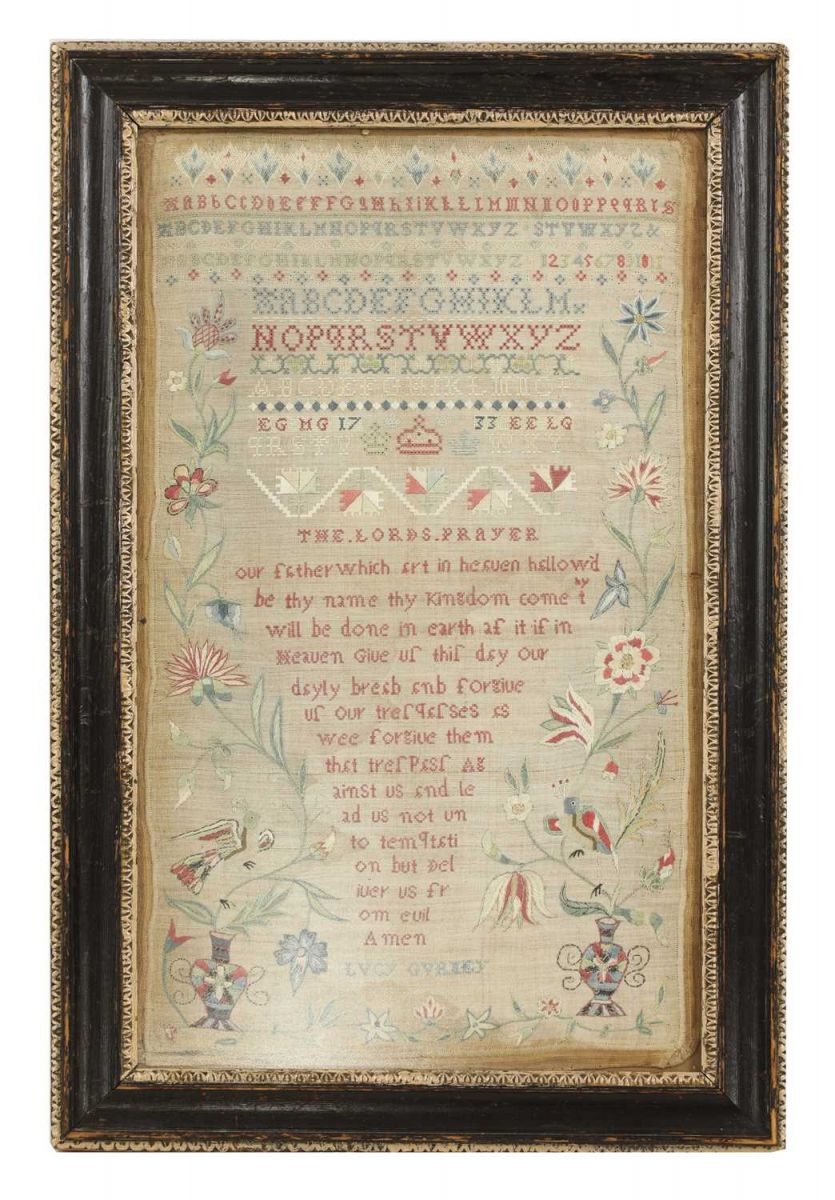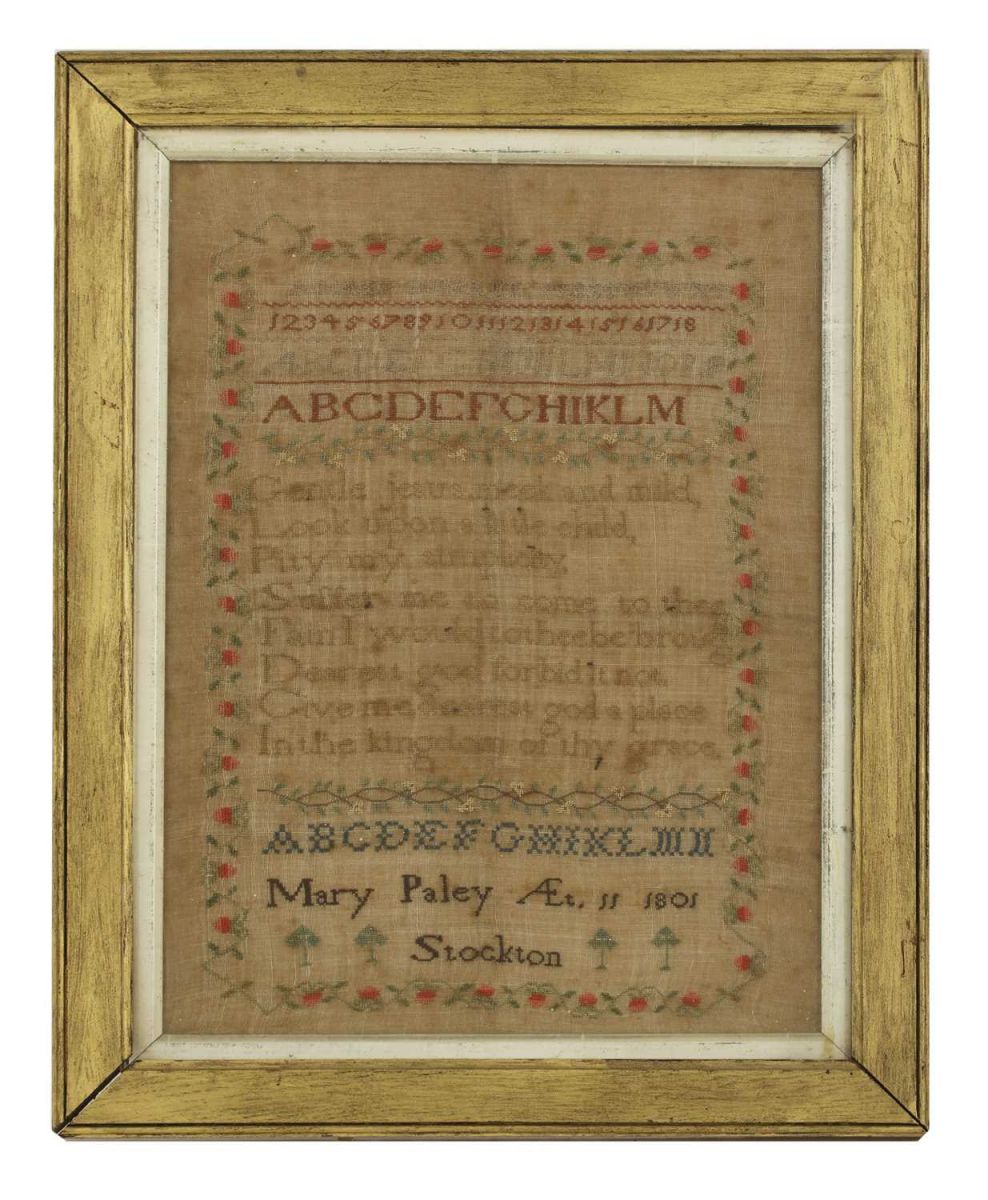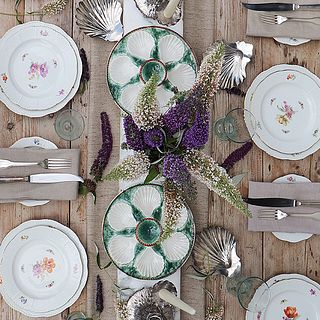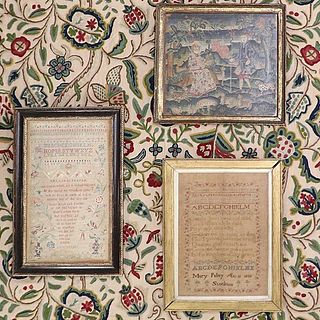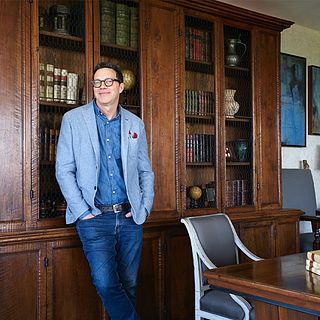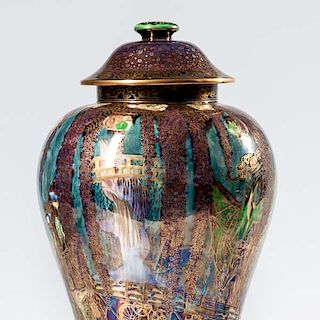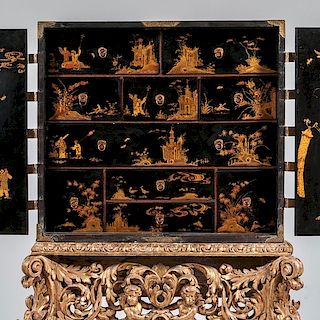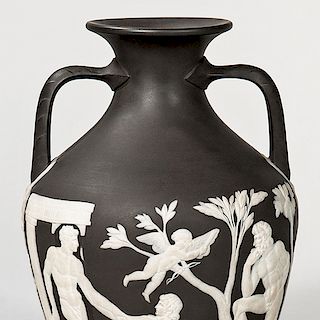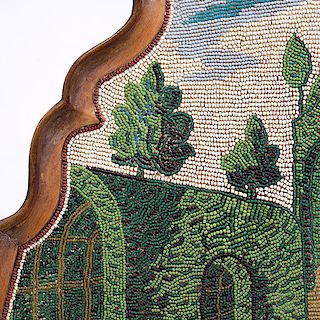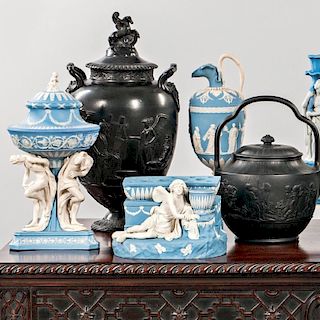A Stitch in Time
With the inclusion of two fine examples of embroidered samplers in Sworders' auction of Fine Interiors on the 29 and 30 June, we take a look into the world of domestic crafts, and how they have influenced the work of the modern and contemporary artist of today.
The artisans of today have a wealth of technology at their crafty fingertips to aid them in their skilled work. Charles Babbage designed the first mechanical printer in the 1800s, to be used with the ‘Difference Engine’ that he also developed in 1822. This was the original concept for a digital programmable computer. But long before the likes of cameras and printers were invented, embroiderers and lacemakers needed some other way to record their various designs, stitches, and patterns in order to reference them in future work.
The solution was to create a hand-stitched ‘sampler’, an English word that derives from the Latin ‘exemplum’, meaning ‘an example’. The painstaking process enabled an individual to record elements that they had learned or copied from others so that they could easily be recreated.
In many cultures, learning needlework was also an important part of a young girl's education and believed essential for the future management of her family and home. Stitching alphanumeric designs allowed for possessions to be marked as one’s own, whilst decorative patterns and motifs could be used to adorn clothes and soft furnishings.
Lot 523, Fine Interiors, 29 & 30 June 2021, A Norfolk sampler, early 18th century, signed 'Lucy Gurney', initialled and dated EG MG 1733 EE LG, 48 x 28 cm visible, in a carved frame, Estimate. £800-1,200
By the 18th century it was common practice for girls as young as five to patiently stitch and restitch popular proverbs, names and dates onto linen. Lot 523 in Sworders' auction of Fine Interiors on the 29 and 30 June is a fine example of an 18th century Norfolk sampler, signed in stitch ‘Lucy Gurney’ and dated 1733. The Gurneys of Earlham were a prominent Norfolk family. It is understood they had a banking business with possible ties with present-day Barclays. Lucy, born in 1722, would have been aged 11 when she worked it. Beautifully decorative colourful vases of flowers with birds to each side demonstrate her impressive youthful skill.
A slightly later George III example can be seen in lot 524 in the sale. Dated 1801 and worked by Mary Paley of Stockton, also aged 11. This sampler has been inscribed with a verse from 'Gentle Jesus Meek and Mild'.
Lot 524 - Fine Interiors, 29 & 30 June 2021, A George III alphanumeric needlework sampler, dated 1801, worked by Mary Paley of Stockton, aged 11, framed, 40 x 29 cm, Estimate. £200-300
The origins of embroidery, the craft of decorating a piece of fabric or other material using a needle to apply a thread or yarn, stem from China, Western Asia, Turkey, and Egypt. Early embroidery can be traced as far back to Cro-Magnon days or around 30,000 B.C.
For many, the term will evoke images of quaint cushion covers in the homes of grandparents, though in recent years, we have seen the emergence of a new generation of artist utilizing both machine and hand stitching in their work to challenge the preconception of this classic craft.
Irish-Danish textile artist Inge Jacobsen crosses the boundaries between art and marketing by recreating glossy magazine covers, the likes of Vogue, GQ and Dazed and Confused, using cross-stitching and embroidery in a term she calls “hijacking”. In doing so, she produces something long lasting from something otherwise considered “fast fashion”.
Another celebrated textile artist, Debbie Smyth, is best known for her impressive large scale thread illustrations that blur the lines between textile art and fine art sketches using a method of plotting pins with acute accuracy and stretching thread between them.
.png)
Lot 340 - Modern and Contemporary Prints, 9 May 2018, Grayson Perry (British, b.1960), HOLD YOUR BELIEFS LIGHTLY, Computerised embroidery in colours on cotton and silk, 2011, signed and numbered 109/250 in black ink on fabric, framed, 28.5 x 40.5 cm, Sold for £4,850 inc fees
Proving that embroidery is as desirable an art form as any other, Grayson Perry’s ‘HOLD YOUR BELIEFS LIGHTLY’, a computerized embroidery on cotton and silk, sold for £4,850 including fees in Sworders' auction of Modern & Contemporary Prints in May 2018.
View the upcoming Sworders, Fine Interiors auction, June 29 & June 30th and register to bid live online via Bidsquare.
_________________________________________
Don't have a Bidsquare account? Sign up here!
Be in the know about upcoming auctions and exciting post-sale results by following us on Facebook and Instagram.
- Preview the December Doyle+Design Auction: A Celebration of Modern & Contemporary Mastery
- Billings Winter Design 2025: A Celebration of Modern Mastery Across Eras
- The Ultimate Holiday Gift Guide: Luxe Finds From Bidsquare’s Finest Auctions
- Fine & Antique Jewelry Sale: A Curated Journey Through Craftsmanship & Design
- Upcoming Auction Spotlight: Doyle’s Fine Art: 19th Century & Early Modernism
- Entertain with Style This Holiday Season: Highlights from Doyle’s December 8 Auction
- Six Standout Lots from Newel’s Fine Jewelry, Timepieces & Luxury Handbags Sale
- Artist Spotlight: Roy Lichtenstein, Pop Art’s Master of Bold Lines & Bigger Ideas
- Discover the Warmth of Pennsylvania Impressionism: Nye & Co.’s Dec. 3 Auction Features the Collection of Nancy & Robert Stein
- Inspired by Cape Cod: The Artists Who Paint Its Light, History, and Character



 EUR
EUR CAD
CAD AUD
AUD GBP
GBP MXN
MXN HKD
HKD CNY
CNY MYR
MYR SEK
SEK SGD
SGD CHF
CHF THB
THB